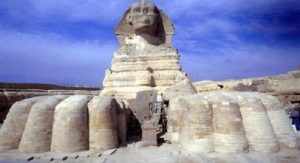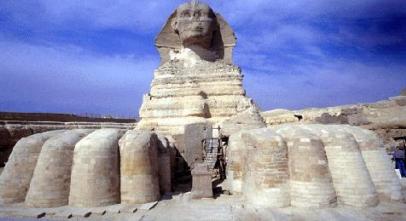by Mennat-Allah El Dorry
Ancient Egyptian history was divide into dynasties in the early third century AD by an Egyptian priest called Manetho, who was commissioned to do so by the king Ptolemy. The Aegyptiaca, Manetho’s accounts, covered the kings from the semi-mythical first pharaoh Menes, to the legendary Alexander the Great. The Aegyptiaca corresponds rather closely the King Lists, which were (as the name suggests) lists of the kings of ancient Egypt. They can be found on Papyri, stone tablets or temple walls.
Each list would include all the names of the kings that ruled from the beginning (starting Menes) to the currently reigning king. However, some kings were selective, choosing to omit names of rulers they did not think were fit, such as King Seti I’s king list in his temple in Abydos (South of Cairo) omits the heretic king Akhenaten. In more modern chronologies, scholars have given labels to certain periods, such as Predynastic, Early Dynastic, Old Kingdom, First Intermediate Period, Middle Kingdom, Second Intermediate Period, New Kingdom, Third Intermediate Period, and Late Period.
While scholars’ logic behind this grouping is understood (the Kingdoms being time of stability and productivity, the intermediate periods being time of foreign conquest and instability), Manetho’s choices in selecting dynasties are not understood. He created the break between a father and his son, and placed successors of different families in one family. The chronologies can be confusing because of each king being known by five different names (nomen, prenomen, the two ladies, the two lands, and Horus of gold).
The threes most known periods of ancient Egyptian history are the Kingdoms, Old, Middle and New. Below is a quick view over the three kingdoms.
Old Kingdom: 2686-2181 BC – Dynasties III, IV, V, VI
The Old Kingdom was a period of economic, political, and thus cultural stability and prosperity. At that time, Egypt was almost self-sufficient and protected from outside opposition from Asia because of the Sinai desert. The dating of the Old Kingdom is mainly based on the Ramesside King-list (also known as Turin King List) and in part reliant on Manetho’s dating.
The Old Kingdom started with the rule of king Nebka (2686-2667), who was succeeded by King Djoser, who was also known as Netjeriket (2667-2648). Under Djoser’s reign, building large-scale stone monuments was introduced. Djoser’s renowned monument is the Step Pyramid, which is located in his pyramid complex at modern-day Saqqara. Built by Djoser’s architect Imhotep, the Saqqara Step Pyramid is the first attempt of pyramid building in Egypt. The pyramid initially took on the form of a mastaba tomb (a flat rectangular structure), which was gradually enlarged to its pyramidal shape. Djoser’s successors, Sekhemkhet (2648-2640) and Khaba (2640-2537) had plans for pyramids, but neither their pyramid complexes were completed, probably owing to both their short reigns (six years each). Little is known of the last two kings of the third dynasty, Sanakht and Huni.
The fourth dynasty started with the rule of King Snofru (2613-2589). During his reign the first true pyramid complex was introduced. Snofru first built the Bent (or North) Pyramid at modern-day Dahshur. The angle of this pyramid was altered around two-thirds up the pyramid, probably because it was too steep. However, Snofru succeeded in building another pyramid just north of the bent pyramid called the Red Pyramid. Pyramid building reached a climax under Snofru’s successor and son, Khufu (2589-2566).
Builder of the Great Pyramid of Giza, Khufu set a record for pyramid building. The Great Pyramid consists of an approximate number of 2,300,000 building blocks weighing around 2.3 tons each. Khufu was succeeded by Djedefra (2566-2558), who was the first king to start using the epithet “Son of Ra,’” integrating Ra’s name into his own. He started building a pyramid in Abu Rawash, which was never completed. Djedefra was succeeded by Khafra (2558-2532). He built another pyramid at the Giza Plateau next to that of his father’s, which is slightly smaller, yet it seems equal because it is built on a higher ground. In front of this pyramid stands a massive stone structure representing a sphinx. There is much debate about its dating, whether to Khufu or Khafra's reign.

The Sphinx, representing a head of a man and the body of a lion.
Khafra was succeeded by his son Menkaura (2532-2503), who also built a pyramid on the Giza Plateau. His pyramid was mostly built in granite, which is more prestigious than the limestone the two other pyramids were built in. However, it was hastily finished under the reign of his successor and son Shepseskaf (2503-2498). Shepseskaf was the only Old Kingdom king who discarded the pyramidal form and chose a mastaba style tomb, known as Mastabit al-Far’un (Pharaoh’s Mastaba).
The fifth dynasty rulers (Userkaf, Sahura, Neferirkara, Menkauhor, Djedkara-Isesi, Unas) were mostly buried at either Abu Sir or Saqqara. The earlier kings of the fifth dynasty built sun temples at Abu Sir, where the cult of the sun god Ra’ was celebrated, and gradually gained importance. The fifth dynasty is most remarkable for the appearance of Pyramid Texts, which are religious spells and texts that appear in the burial chambers of the pyramids.
The sixth dynasty is most known for the mastaba tombs that were the fashion at that time, and the increase in the popularity of the Pyramid texts. Moreover, the large amount of documents that date from dynasty six give an insight about the social, political, and religious practices and norms at that time. The Old Kingdom fell apart due to many changes that took place, from change in the climate and increase in dryness, to the rise of the power of the cult of Ra and its priests, resulting in decreasing the king’s power.
The Middle Kingdom: 2055-1650 BC -- Dynasties XI, XII, XIII
After the First Intermediate Period, King Mentuhotep II Nebhepetra (2055-2004) restored peace and to Egypt, order and stability, reunifying its Upper and Lower lands. He is buried at his Deir El Bahari mortuary complex, which is considered one of the most superb achievements of this time.
The Middle Kingdom is known for its vast literary output, including the Wisdom Texts, which provide an insight on the social and political conditions of the people at the time. Tomb models that were found in the tomb of the nobleman Meketra’s tomb also give great detail regarding the various aspects of the society, from cattle counting to weaving and coffin making. During the Middle Kingdom, the quality of pyramid building dropped, and instead of large stone structures, the pyramids were built in mud brick with limestone casing that has not survived.
Model from the tomb of Meketra showing a weaving workshop.
During the reign of Mentuhotep’s successor, Mentuhotep III Sankhkara (2004-1992) art reached a peak. He was succeeded by Mentuhotep IV Nebtawyra (1992-1985). The most notable event of his reign was the expedition he sent to Wadi Hammamat to quarry Grey Wacky. The expedition was led by Amenemhat, the king’s vizier. The eleventh dynasty ended by the death of Nebtawyra, who was succeeded by his vizier, Amenemhat I (1985-1956).
Nebtawyra probably had no male heir to the throne, or his kingship was weak.
Amenemhat I started the twelfth dynasty and established a capital called Amehemhat-itjtawy (Itjtawy for short). The early twelfth dynasty was most recognized by the increase in agriculture in Fayum and the gradual takeover of Nubia. There are pyramid complexes of Senusert II at El-Lahun, Senusert III, Amenemhat II and III at Dahshur and Amenemhat III at Fayum respectively. Moreover, much evidence remains about the society in tombs of the elite, such as in Meir, Asyut, and Beni Hasan.
There is much evidence of religious buildings that has survived to our time, including the earliest segment of the building of the Amun temple at Karnak, the temples of Amenemhat III and Sobek at Medinet Maadi. Abydos became an important pilgrimage site because of its recognition as the burial place of the god Osiris’ head.
Amenemhat I was murdered, and was succeeded by his son Senusert I (1956-1911). The Hekanakhte Papers, which have survived from the reign of Senusert I give much evidence about the society at the time. They were letters written by an old farmer named Hekanakhte, to his family while he was away on business. They give us details about the agricultural life around his time, and also interfamily relations, where he scolded his oldest son for not giving his brother enough food. Senusert was I succeeded by Amenemhat II (1911-1877), who built a poorly preserved pyramid at Dahshur. He was succeeded by Senusert II (1870-1831) whose reign witnessed much trade with the Near East.
Senusert II was succeed by Senusert III (1870-1831) who was responsible large-scale brutal campaigns in Nubia. He destroyed the power of provincial nomes (governorates) by creating Warets. The warets were ministries each headed by an official and an assistant. There was a waret for each of Lower Egypt, Upper Egypt, and Nubia. He built a limestone-cased pyramid at Dahshur, and a complex at Abydos, which possibly could have been where his cult was celebrate for two centuries after his death. His remains were never found, so there is still much speculation about his actual burial place. He was succeeded by Amenemhat III (1831-1786), who led Egypt into a long reign of stability and cultural wealth. He built a pyramid at Dahshur (the Black Pyramid), which has cracked and crumbled.
Amenemhat III was succeeded by Amenemhat IV (1786-1777), his grandson. It is likely that he ascended the throne as an old man because he died after only nine years. He was succeeded by his wife/sister Queen Sobekneferu (1777-1773).
The thirteenth dynasty rulers continued to use Itjtawy as their capital. It is suggested that kingship may have circulated around between leading families. Even though the thirteenth dynasty rulers are accounted for in the Turin-Canon (a king list), little is known about individual kings.
The thirteenth dynasty ended with the abandonment of Itjtawy and the rule of the Hyksos, who are also called the Asiatics. They came gradually and peacefully as early as the twelfth dynasty as it is evident from depiction in the tombs of Beni Hasan. The Second Intermediate Period started with the establishing of Avaris in the Delta.
The New Kingdom: 1550-1069 BC -- Dynasties IIX, IX, X
The New Kingdom started with the expulsion of the Hyksos, which was started by Kamose (1555-1550) towards the end of the seventeenth dynasty. The expulsion was carried on by his successor Ahmose (1550-1525). The Egyptian army extended the boundaries of Egypt beyond Syria-Palestine. During this period, Egypt controlled Nubia and areas in the Levant and developed close mercantile relations with Crete and areas in the Near East.
The eighteenth dynasty was a period of prosperity and stability in ancient Egypt. The arts flourished during this time, and literature was very popular. During this time the god “Amun,” or “The Hidden One” gained importance.
The New Kingdom saw the establishment of the Valley of the Kingdom under the reign of Tutmosis I (1504-1492). He was succeeded by his son Tutmosis II (1492-1479) who married his half sister Queen Hatshepsut (1473-1458). Hatshepsut eventually ruled with Tutmosis III (14791425), her stepson, and nephew. She built much for Amun, and always served his cult, introducing the Opet festival that celebrates him. Hatsheput’s successors managed to expand the (Amunhotep II and III) and maintain stability. However, Amunhotep III’s (1390-1352) son, Amunhotep IV (1352-1336), led Egypt into a period of instability.
Amunhotep IV brought forth a new god, the Aton, which he believed was his deified father. Eventually, he changed his name to Akhenaten, abandoning Thebes as a capital and moving to “Akhenaten,” modern-day Tell El Amarna. He also banned the worship of all other gods, closing down the temples of Amun and erasing his name from the monuments. The art during his reign changed drastically, where humans were no longer shown in the idealized look of the previous kingdoms, but in an exaggerated, less formal look. Akhenaten reigned for around eighteen years, and was succeeded by Tutankhamun (1336-1327), who was either a son or a much younger brother.
Tutankhamun ruled from the age of ten and died when he was around eighteen years old. Tutankhamun’s successors, Ay (1327-1323) and Horemheb (1323-1295), were both of non-royal origins, but still ruled, resorting the monuments that were defaced under Akhenaton's reign.
The nineteenth dynasty started with the reign of Ramesses I (1295-1294). The Ramsessides, who probably originated form the Delta, restored the culture, adopting much of the traditional norms such as in art and foreign policies. During the 67-year reign of Ramesses II (1279-1213), he built many monuments for himself, and added on to others. During his time the Battle of Kadesh took place, which is the best-documented battle. There were also many peace talks, and even a treaty between Egypt and the Hittites.
In the twentieth dynasty and under the reign of Ramesses III (1184-1153), the Egyptians were faced with the “People of the Sea.” This caused instability, setting the floor for the Assyrians to become the dominant power in the ancient Near East.
The New Kingdom ended with the various foreign influences and kings that controlled Egypt.




